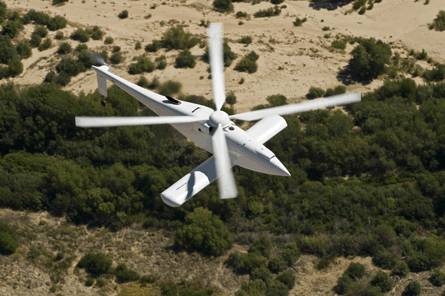In a shift away from traditional practice for a major US defence contractor, Boeing has decided to restart production of its A160 Hummingbird unmanned helicopter despite the lack of a new order.
The industry typically waits for the US military to define a requirement or award a contract before launching an aircraft into low-rate production, but Boeing began assembling the first of 21 new A160s on 15 March, says programme manager Ernie Wattam.
The white-tail A160s will start being available for sale or leased as a service to military and government agencies starting in early 2011.
Manufacturing has been relocated from Victorville, California, to Boeing's military rotorcraft hub in Mesa, Arizona, and the production aircraft will be slightly different from the 10 prototypes developed under contracts with US Special Operations Command, the Applied Aviation Technology Directorate and the Defense Advanced Research Projects Agency, says Wattam.
 |
|---|
© Boeing |
He says Boeing is continuing to review its business strategy for A160, but options include offering the aircraft as both a government-owned and contractor-owned system.
Boeing's A160 strategy follows the example set by its Insitu subsidiary, which developed the SeaScan unmanned air system in the late 1990s. The vehicle was rebranded as the ScanEagle a few years later and offered to the US Marine Corps.
Boeing has improved the A160's redundancy in control systems. The production version also includes weatherisation improvements and metal leading edges.
"We're trying to anticipate what configuration what will do the job," Wattam says. "So far the answer [from potential customers] has been, 'yeah, we think you got it'."
The A160 has been in development for more than 10 years, recording a record-breaking 18h flight for an unmanned helicopter in 2008. Designed by Predator inventor Abe Karem, the A160 features optimum speed rotor technology that varies engine power in hover and cruise modes.
But customers have been slow to acquire the aircraft after DARPA completed most development activity in late 2008.
Boeing has recently demonstrated the A160 to the US Navy as an unmanned cargo aircraft. The aircraft showed the capability to haul a 1,133kg (2,500lb) external load 140km (75nm) away within 6h, Wattam says.
The A160 is competing for a potential contract award to deploy an unmanned aircraft to deliver cargo in Afghanistan. The Kaman/Lockheed Martin K-Max helicopter also has demonstrated the same capability to the USN.
Meanwhile, SOCOM continues to show interest in the A160's unique capabilities as a long-endurance rotorcraft. Two A160s will be deployed to South America shortly to demonstrate the Forester foliage penetration radar.
SOCOM has previously discussed plans to order as many as 20 A160s, which would be redesigned the YMQ-18.
Source: Flight International
















